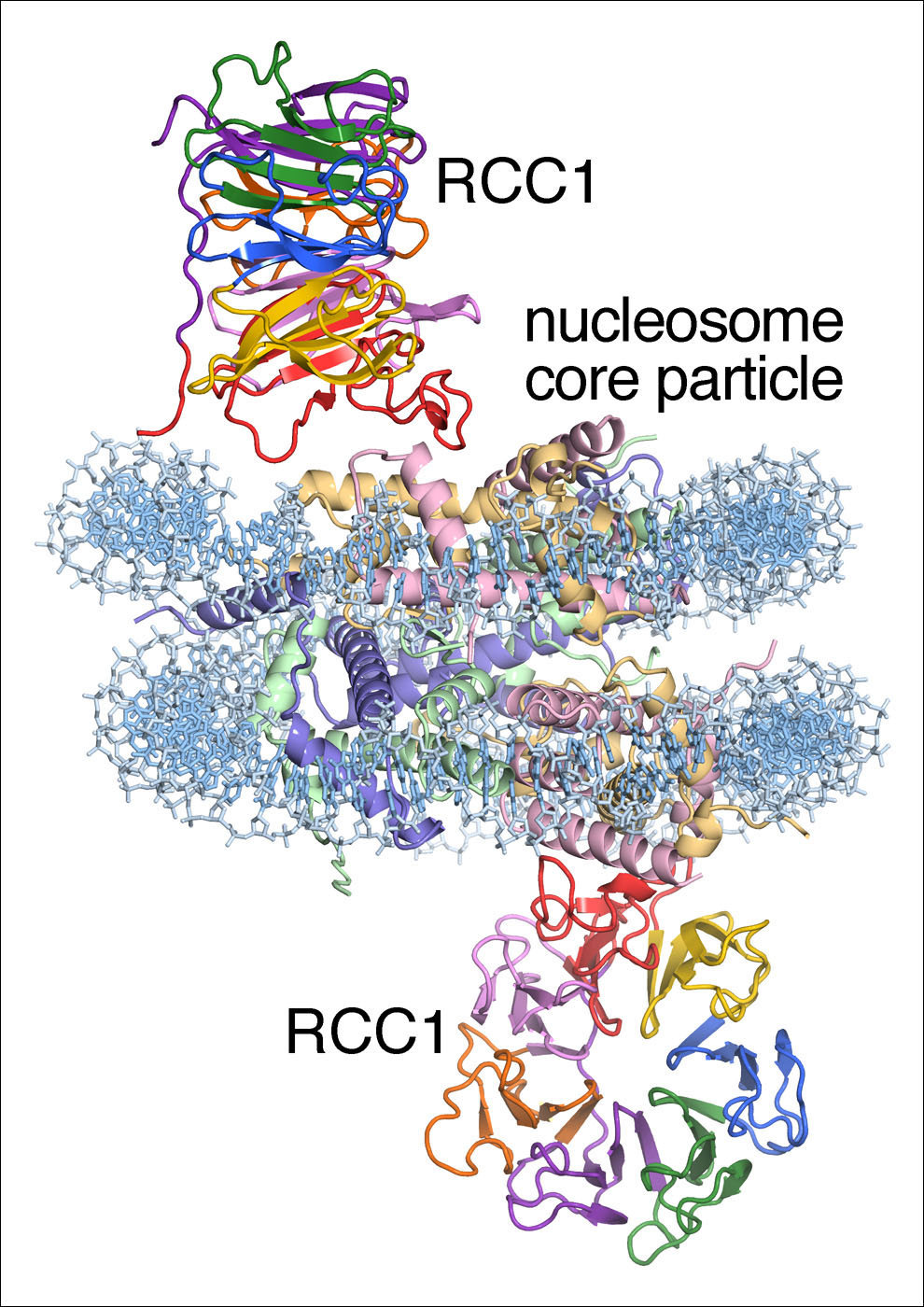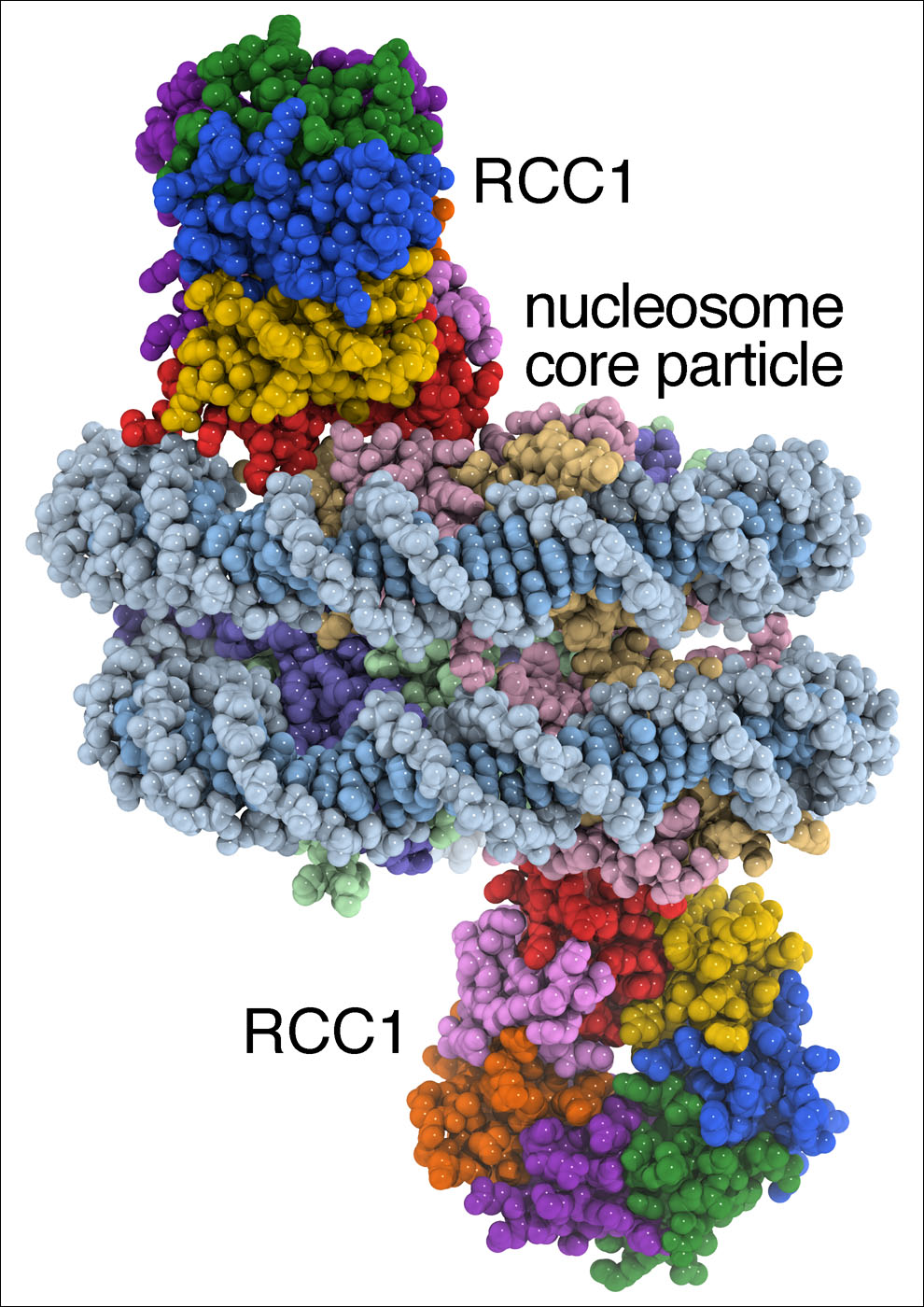X-RAY RUNS: Apply for Beamtime
2017 Nov 1 - Dec 21
2018 Feb 7 - Apr 3
2018 Proposal/BTR deadline: 12/1/17
2018 Apr 11 - Jun 4
2018 Proposal/BTR deadline: 2/1/18
Ravindra D. Makde, Joseph R. England, Hemant P. Yennawar, and Song Tan; "Structure of RCC1 Chromatin Factor Bound to the Nucleosome Core Particle", Nature 467, 562-566 (2010)
The chromosomes in each cell in our body contain about 6 feet of DNA. To fit into a cell nucleus about one tenth the diameter of a human hair, this DNA is packaged into organized bundles called chromatin. In a study published in the journal Nature, Ravindra Makde and other researchers from Song Tan's group at Penn State University have used X-ray crystallography to visualize how a cell recognizes chromatin. The study provides the first three-dimensional atomic structure of a chromatin protein acting on the nucleosome, the repeating unit of chromatin.
The structure was determined using crystals of the chromatin protein RCC1 in a complex with the nucleosome. RCC1 (regulator of chromosome condensation) is a protein critical for proper separation of chromosomes during cell division. The researchers prepared RCC1 protein, the four core histone proteins and about 150 base pairs of DNA using recombinant DNA methods in E. coli. These components were assembled into chromatin complexes which were then carefully coaxed into crystals.
The crystals were initially characterized at X-ray diffraction beamline A1 at CHESS, and further analyzed using the 24-ID-E beamline specially adapted for complex biological molecules at the Advanced Photon Source (APS). This APS beamline is part of the Northeastern Collaborative Access Team facility which is managed by Cornell University. Contacted by email, Song Tan said "Our work was made possible by the world-class facilities at CHESS and APS, and the superb technical support of the beamline personnel."


Two renderings of the chromatin complex provided by the Tan group.
More information is available on the Tan group's web site
at:
http://www.personal.psu.edu/sxt30/index.html
References: Carazo-Salas, R.E., et al.; "Generation of GTP-bound Ran by RCC1 is Required for Chromatin-induced Mitotic Spindle Formation", Nature 400, 178-181 (1999)
By Alex Mellnik - Physics Dept., Cornell University
